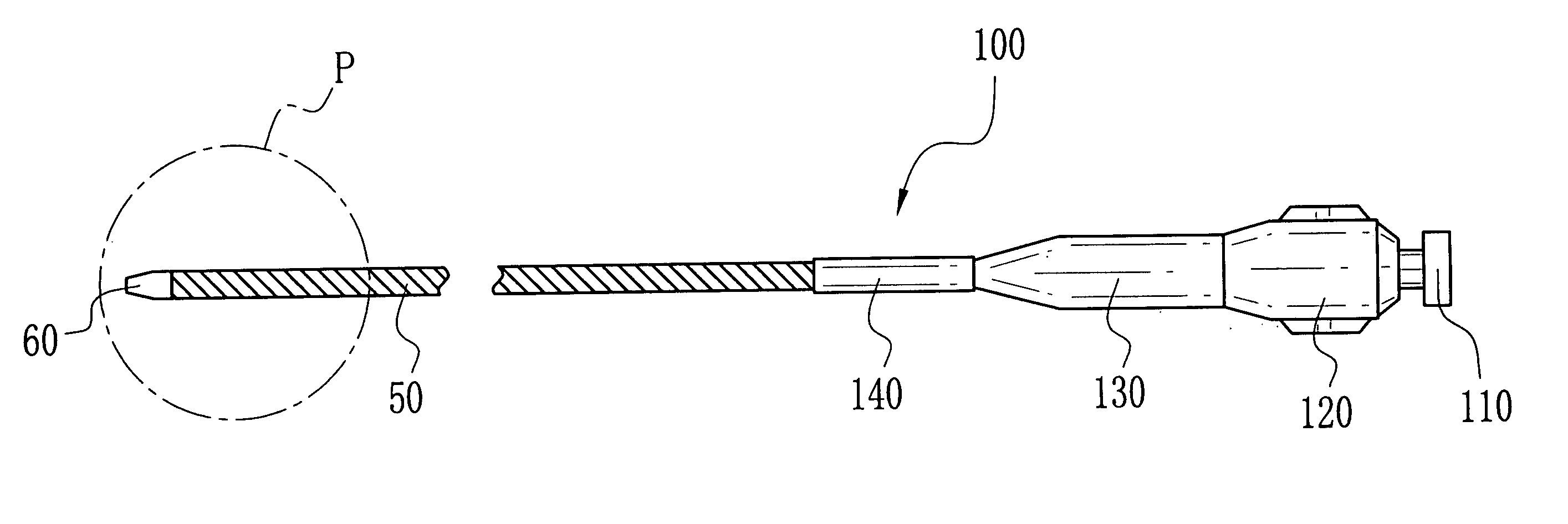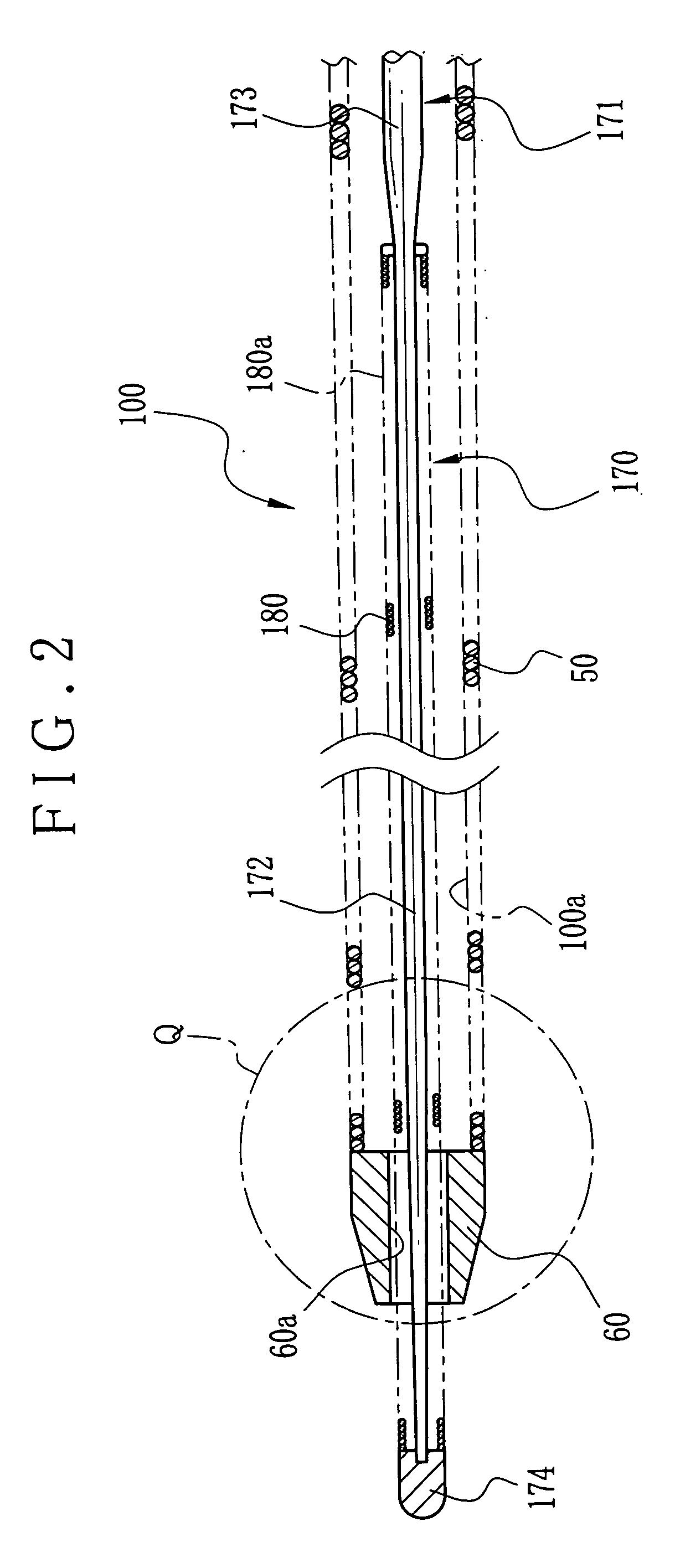Medical instrument and medical equipment for treatment, and rotational handle device
a technology of medical instruments and handle devices, applied in the field of rotational handle devices, can solve the problems of delayed transmission of rotation upon applying torque to the handle device of the tube-shaped medical instrument at the distal end, and the inability to easily penetrate the total occlusion, etc., to prevent excessive torque
- Summary
- Abstract
- Description
- Claims
- Application Information
AI Technical Summary
Benefits of technology
Problems solved by technology
Method used
Image
Examples
example 1
[0094] In FIGS. 3A-3D, cutting heads or blades of tubular tips of Example 1 are illustrated, the structures including a first structure of FIG. 3A, a second structure of FIG. 3B, a third structure of FIG. 3C, and a fourth structure of FIG. 3D. The tubular tip 60 has the cutting head 10 with a surface to extend toward the axis. A tubular tip 61 has a cutting head or blade 11. Also, tubular tips 62 and 63 have cutting heads or blades 12 and 13. In FIG. 3A, the first structure has the cutting head 10 constituted by two V shaped notches positioned opposite to one another relative to the center. In FIG. 3B, the second structure has the cutting head 11 constituted by four V shaped notches positioned regularly at four points defined by equally dividing the circumference. In FIG. 3C, the third structure has the cutting head 12 constituted by inclined V shaped notches formed at two points at the end of the tubular tip 62. In FIG. 3D, the fourth structure has the cutting head 13 constituted o...
example 2
[0099] In FIGS. 8A-8D, cutting heads or blades of tubular tips of Example 2 are illustrated in a perspective view, the structures including a first structure of FIG. 8A, a second structure of FIG. 8B, a third structure of FIG. 8C, and a fourth structure of FIG. 8D. Cutting heads or blades 20, 21, 22 and 23 are inclined cutting edges relative to an axial direction. In FIG. 8A, a first structure is illustrated. The cutting head 20 has a cutting edge 20a, which extends along a straight line contained in one plane passing the axis and at one point on an end face 70a of a tubular tip 70. A cutting edge 20b is inclined relative to the axial direction and opposed to the cutting edge 20a.
[0100] In FIG. 8B, a second structure is illustrated. The cutting head or blade 21 has an end inclined cutting edge 21c, which is defined by recessing the cutting edge 20b of the cutting head 20 in FIG. 8A. A tubular tip 71 has an end face 71a. A cutting edge 21a lies at a point on the end face 71a and ext...
example 3
[0104] In FIGS. 9A-9H, cutting heads or blades of tubular tips of Example 3 are illustrated in a side elevation and front elevation, the structures including a first structure of FIGS. 9A and 9B, a second structure of FIGS. 9C and 9D, a third structure of FIGS. 9E and 9F, and a fourth structure of FIGS. 9G and 9H. In FIGS. 9A and 9B, a tubular tip 80 has a cutting head or blade 30. Notch formed cutting edges 30a and 30b are disposed on the cutting head 30, and are symmetrical with one another with reference to a centerline passing the center of the tubular tip 80. In FIGS. 9C and 9D, a tubular tip 81 has a cutting head or blade 31. Notch formed cutting edges 31a and 31b are disposed on the cutting head 31, and are asymmetrical with one another with reference to a centerline passing the center of the tubular tip 81. In FIGS. 9E and 9F, a tubular tip 82 has a cutting head or blade 32. Crescent shaped cutting edges 32a and 32b are disposed on the cutting head 32, and are symmetrical wi...
PUM
 Login to View More
Login to View More Abstract
Description
Claims
Application Information
 Login to View More
Login to View More - R&D
- Intellectual Property
- Life Sciences
- Materials
- Tech Scout
- Unparalleled Data Quality
- Higher Quality Content
- 60% Fewer Hallucinations
Browse by: Latest US Patents, China's latest patents, Technical Efficacy Thesaurus, Application Domain, Technology Topic, Popular Technical Reports.
© 2025 PatSnap. All rights reserved.Legal|Privacy policy|Modern Slavery Act Transparency Statement|Sitemap|About US| Contact US: help@patsnap.com



